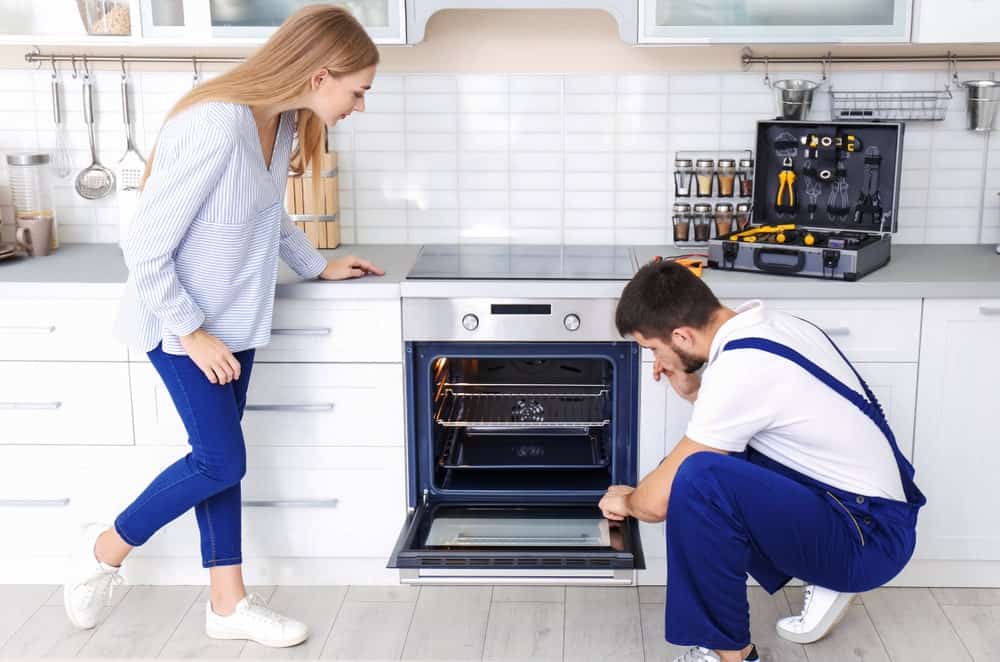Some Major appliances have many components in common, making repairs easier. For example, once you’ve learned to repair a refrigerator’s power cord, you can do the same to fix a washing machine’s power cord.
Some Major appliances have a large number for all intents common, making fixes quickly. For instance, whenever you’ve figured out how to fix a power cord in the fridge. So, you can also apply similar skills to repairing a washing machine’s power cord. Home appliances have become mandatory for life. They’ve made our lives so much simpler that it’s difficult to consider living without these machines. That is why we get stumped when these appliances quit working and need them fixed immediately.
More often than not, the issue with a gadget making it break down or quit working is a minor issue that will be resolved at home without trouble. Also, the cords and plugs of significant appliances are almost the same for fixing. You need to be easy and instruct yourself.
The following article explains regular gadgets utilizing major appliances and offers tips on the most proficient method to fix them.
- Power Cords and Plugs
- Replacing an appliance Cord
- Home Appliance Repair or Making new Connections
- Attach a new plug to the old cord
- Plugs Replacement
Power Cords and Plugs
Several appliance “breakdowns” are caused by worn, frayed power cords or plugs that don’t connect. To guarantee safe activity, immediately check all appliance cords for erratic and supplant frayed or broken cords. Also, when speculating a defective line, eliminate it from the appliance and test it with a continuity analyzer. Clasp the analyzer to one sharp edge of the plug and contact the test to one of the wires. Further, if it’s a plug-in cord, insert the test into one of the two openings at the appliance end of the line.
If the analyzer lights or hums, move it to the next wire or opening and test again; rehash this method to try the other cutting edge of the plug. The cord isn’t flawed if the analyzer lights or hums at each test point. So, if it neglects to light or buzz anytime, the cord or plug is broken. You can pinpoint the deformity by cutting off the plug and testing the cut finish of the cord. If the analyzer lights or hums at all test points now, the plug is the faulty part. The harmed part – cord, plug, or both – ought to supplant.
Replacing an appliance Cord
Regularly, the most intricate part of replacing an appliance cord is determining how the appliance breaks apart to eliminate the old cord and append another one. Now and again, you should stop the cover from being in an association box. In different cases, similarly, as with a bit of hairdryer, the actual unit should be, to some extent, pulled to pieces before you can arrive at the terminals. In all cases, the cord holding sets with a clasp or will fix with the strain-help gadget.
To eliminate the cord, unscrew the terminal screws or pull the pressing factor connectors separately. So, extricate the cinch or stop the strain-help gadget and haul the line out. Installation of the new cord is just a converse method. Please save the strain-help device and supplant it on the new cord. On the off chance that you harm the strain-alleviation gadget when you eliminate it, replace it with another one of a similar sort.
Home Appliance Repair or Making new Connections
In some hardware, the conductor closes are circling terminal screws, making new links simple. Cautiously remove the external insulation (not the insulation on the inner wires) for around 2 inches toward the finish of the cord. Then, at that point, using a wire stripper, eliminate about 1/2 inch of insulation from the finish of every conduit wire.
Bend the uncovered fibers of each wire clockwise into a substantial prong. Release the terminal screws and circle each exposed wire end clockwise around a screw. Fix the screws solidly. Associate the cables at the appliance end of the new cord the same way the old wires connect.
Attach a new plug to the old cord.
If someone breaks the plug on a major appliance, you can attach another new pin to the old cord. Male plugs, with two sharp edges or two cutting edges and a grounding prong, plug into a power source. Female plugs, usually utilizing the appliance end of the cord, have terminal openings instead of cutting edges. Male plugs can typically run in a dismantling mode so you can get to the terminal screws. Female plugs will hopefully be seizing together by bolts or by screws. Screw-held plugs will be dismantled; however, you cannot fix rivet-held pins.
Plugs Replacement
At the point when a plug glitches, open the plug, if conceivable, and check to ensure the conductor wires are appropriately joining to the plug’s screw terminals. On the off chance that the cables are free, fix the terminal screw. It might tackle the issue; in any case, the plug should be supplanted. To join another male plug:
Step 1:
Insert the cord end through the plug opening and get it through for around five or six inches.
Step 2:
Carefully remove the external insulation for about 2 inches. Then, using a wire stripper, eliminate about 1/2 inch of insulation from the finish of every transmitter wire.
Step 3:
Twist the uncovered fibers of each wire clockwise into a substantial prong. After twisting, the channel closes, attaching a tight bunch with the inner wires of the cord. Then, reassess down over the bunch, leaving the uncovered closures of the channel wires sticking out. Release the terminal and sink the plug.
Step 4:
Circle each wire around one prong and toward a screw terminal on a two-wire plug. Circle the uncovered wire end clockwise around the screw terminal and fix the screw. If the screws are of various tones, associate the white wire with the white screw and the dark wire with the yellow screw. On a three-wire plug, utilize a similar strategy to interface every three wires to a terminal screw. Interface the green grounding wire to the green screw terminal.
Step 5:
When the conduit wires are immovably appearing secure to the terminal screws, slide the cardboard insulator over the sharp edges of the plug. If the pin has a cinch-type sleeve, clasp it solidly around the cord.
If you find this job difficult, consult with a senior at Home Appliance Repair in Dublin or hire an expert for the repair services.
Conclusion:
All the Major appliances have almost the same power cords and plugs as washing machines and fridges. So, if you know how to fix them properly, you can practically repair all the appliance cords and plugs. Home appliances have become essential. But if you cannot repair appliances and their parts, you can consult with an experienced person. Also, for further home appliance repair services, you can visit annexo.com because they have the best experts who will guide you properly and provide you with the best services.





